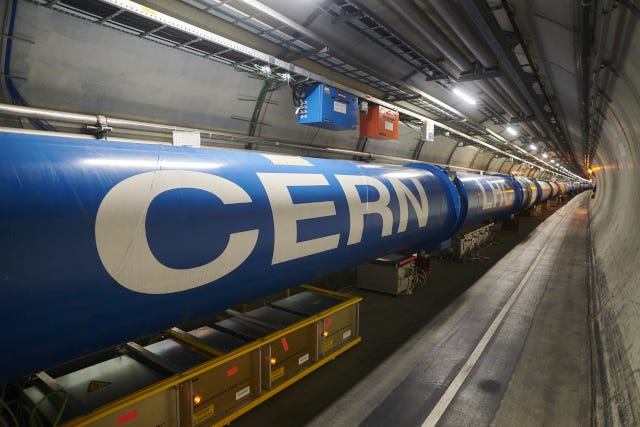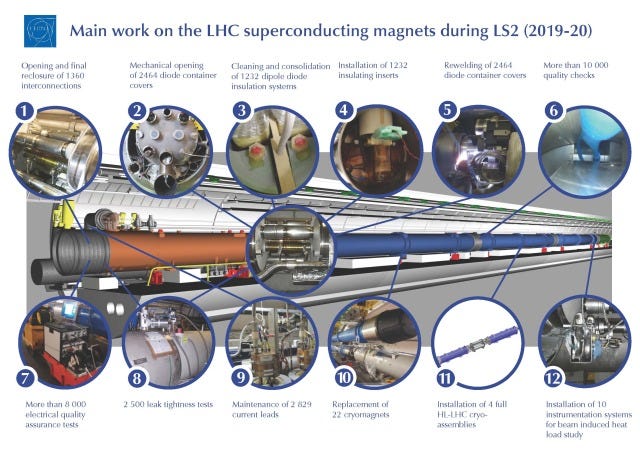CERN's Milestone: Achieving the First Stable Beams of 2024
Written on
Chapter 1: The First Stable Beam of 2024
In a remarkable achievement, the European Organization for Nuclear Research (CERN) has successfully produced the first stable beams in its Large Hadron Collider (LHC) for the year 2024. This milestone signifies a pivotal moment in the realm of particle physics and the enduring quest to decipher the enigmas of the universe.

The Journey to Stability
The process of attaining stable beams is intricate and requires careful execution. It commenced with the injection of beams into the LHC from earlier accelerators within the CERN facility. Subsequently, the beams experienced a ramp-up phase, gradually increasing their energy to the target level of 6.8 TeV. The final adjustment, referred to as "squeezing," involved fine-tuning the LHC's powerful magnets to narrow the beams and align their paths with precision, which is crucial for enhancing the chances of collisions within the detectors.
A Brief History of CERN
CERN's inception can be traced back to the 1940s when a visionary group of scientists aimed to establish a leading physics research institution in Europe. Their goal was not only to curb the post-World War II exodus of talent to America but also to promote unity in a fractured Europe. Officially founded in 1954 with the signing of the CERN Convention by twelve member states, CERN has since evolved into a global collaborative hub, attracting thousands of scientists from various countries.
How CERN Functions
At the core of CERN's research infrastructure lies the LHC, the largest and most potent particle collider in existence. The LHC propels beams of protons to near-light speeds before causing them to collide. These collisions yield a myriad of particles, which provide invaluable data for physicists studying the fundamental laws that govern nature. The LHC's detectors meticulously observe and record the aftermath of these collisions, enabling scientists to analyze events that replicate conditions just moments after the Big Bang. This research has led to groundbreaking discoveries, including the Higgs boson, which elucidates why certain particles possess mass.

The Significance of the First Stable Beam
The first stable beam of 2024 is not merely a technical feat; it encapsulates decades of scientific effort. This development paves the way for a new phase of data collection, promising to illuminate the most profound secrets of the cosmos. As the LHC operates at unprecedented energy levels, the scientific community eagerly awaits the insights that will emerge from this groundbreaking machine. This ongoing pursuit of knowledge underscores human curiosity and the tireless quest to understand our universe. CERN's achievements are milestones not only for the scientific community but also serve as an inspiration for future generations of explorers and thinkers. The stable beams of 2024 represent just the beginning of another thrilling chapter in the journey of discovery.

Chapter 2: Exciting Developments Ahead
As CERN continues its groundbreaking work, the anticipation surrounding the research outcomes is palpable.
This video titled "LHC news: First stable beams at 13.6 TeV in 2023!" delves into the recent advancements in the LHC's operations and their implications for future research.
In another live presentation, "LIVE: Launch of CERN's Large Hadron Collider Run 3," experts discuss the significance of the LHC's third run and what it means for particle physics.